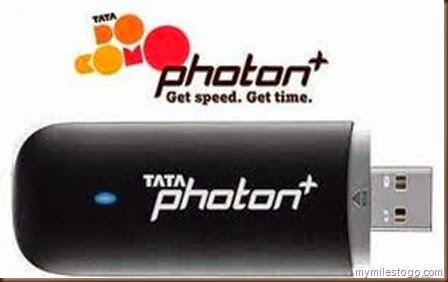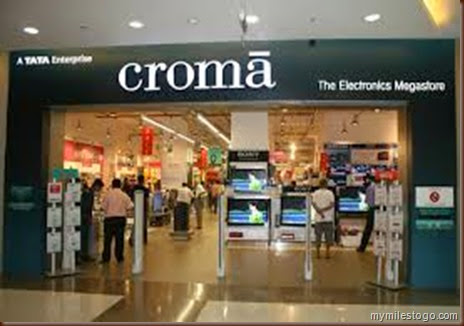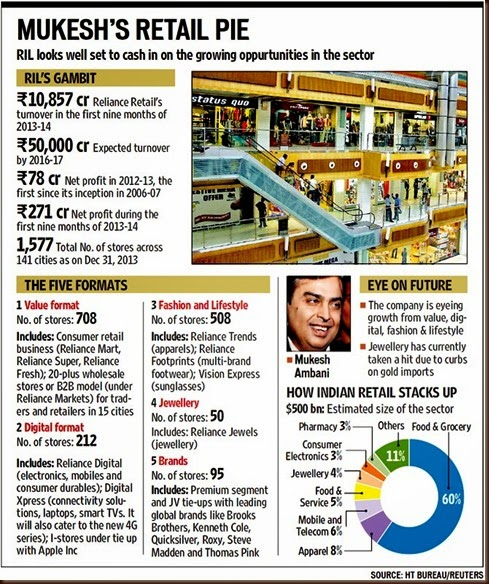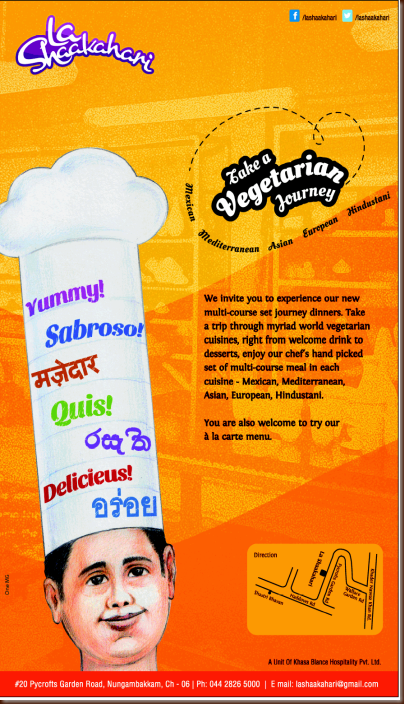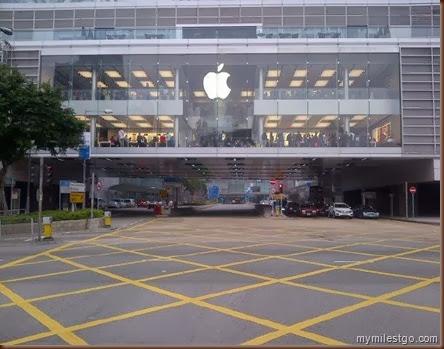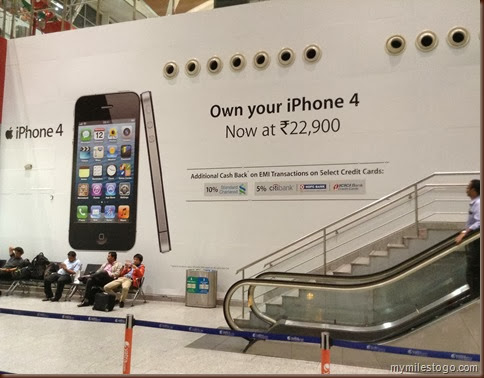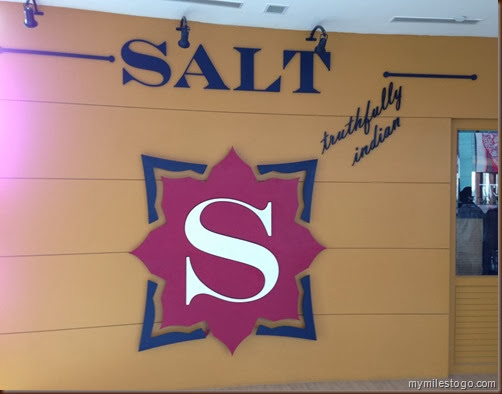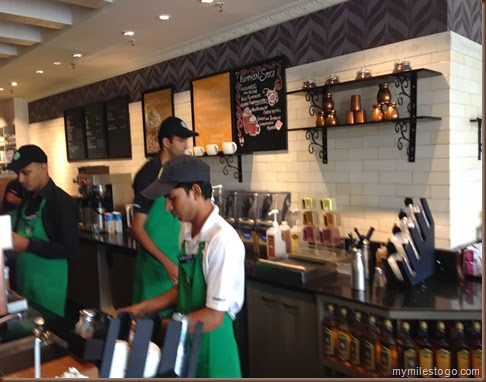16 January, 2015
Breaking fast the traditional way!
17 April, 2014
Digital Retail is still nascent
Croma, which is a part of the TATA Group has been my preferred store for shopping all things electronic over the past few years. They customer service is friendly, well-stocked and well maintained and operated stores. The staff also double up as digital experts, mostly guiding customers on why they need to buy a gadget, rather than what they need to. The apple Assistant at one of the Croma Stores I frequent is more like a good friend and advisor now – I reach out to him regarding queries about the phone, the software, the enhancements and a whole lot. Croma’s main competitors in the organized Retail space include EZone from the Future Group and Reliance Digital, a part of Reliance Retail. Then there are the local biggies, such as Viveks, Shahs, VGp, etc in Chennai and ofcourse the most infamous Ritchie Street off Mount Road which is the hub for electronic products in the city. Croma has fared much better than the others while it faces stiff competition from Reliance which is expanding rapidly off late.
I visited the Croma Store on Mount Road a month back, to enquire about a revolutionary device – a a USB Stick which provided 3G & Wi-Fi services on the go. The device just needs a plug point – AC or DC; which means you can use it as a wi+fi device using the cigarette lighter slot in your car and can provide its service upto 5 gadgets including laptops, tablets, phones, iPods, etc. The device has been around for sometime and the staff say that it is seeing brisk sales every other day that it gets sold out within a few days of stocks coming in to the store. So, the store that I went to didn’t have the stocks and they apologised for the same, and said that I could pay the advance for the device and that they would call once the device reaches the store. Somehow, I wasn’t comfortable with that idea, since I wanted the device then and there.
I set out looking for the Tata DOCOMO Store that exclusively sells these devices and offers other solutions and services of the same nature. Even they didn’t have the stock at the time I went. However, the staff was quick to note down my details and said he would call me the next day as soon as he received the stocks. And he did promptly call me the next day. Within just four hours, the device was working!
So, why did the guy at Croma not do what the guy at the DoCoMo store did? Since, the sales targets were different to each one of them, simple. For a mass retailer, which attracts hundreds of customers to their stores, the kind of focused service is always on the back seat. For the guy at the exclusive store, his key targets are selling the USB sticks and converting buyers into users and users into big spenders. It’s a known fact that “data usage” is indeed going to be a money spinner in times to come for Telecom companies, with SMS being replaced by the likes of whatsApp and ISD calls being replaced by the likes of Viber, Line, etc.
I would have expected Croma, which is also a Tata Company to work closely with another division of the group (DoCoMo is a Telecom company operated by Tata Teleservics). It is challenging, since they are different companies with different cultures. Also, the supply chain mechanism could be different. The big learning was as consumers, we need to visit the right kind of stores to get our things done. While it is simpler to buy online, it takes much more time to get the sim-card activated which required personal identification at a retail store, and hence only elongates the process.
21 March, 2014
Reliance wins handsdown
The first store for Reliance came up in Hyderabad. It was a grocery retail format and many skeptics wrote off the idea, citing intense competition in this segment. Gross Margins are low, two-digits and net margins, if any are a mere 4-6%. So, how would the company ever make money? Further, there were already established players in this segment, especially in the South (of India) such as Foodworld, Spencers, Food Bazaar, Nilgiris, FabMall, Trinetra (now together More), Fresh @ from Heritage Foods – the list could go on! But patience and perseverance has helped the company in the long term. According to a report in the most respected Hindustan Times newspaper, the company would become the largest Retailer in India by Sales in 2013-2014. The company is expected to close the year with $2 Billion in Sales, approx. INR 12,000 Crores. And it made a meagre INR 78 Crores last year and has made INR 278 Crores in 2013-14. That’s not bad at all. The company has been able to achieve scale over the past 7 years and its many Chief Executives of respective businesses have built the business brick by brick, sweating and toiling between Board Rooms and Store fronts.
Take a quick look at how the numbers stack up;
It’s a commendable achievement for Reliance Retail to achieve this position. Those who know me well would now agree what I have been saying ever since Reliance joined the fray in the Retail sector. I predicted right in the beginning that they are here for the long term. With a cash pile of INR 90,000 Crores and managing the largest Oil refinery in the world, Reliance has real deep pockets. And its Chairman Mukesh Ambani is not someone to open and shut businesses. Its not in their blood. Dirubhai Ambani, the patron founder of the group tht every household in India should have a Reliance product in some form or the other. The group created a furore in 2002 when the Reliance Mobile network was launched with an exciting Rs. 501/- package making it the most affordable mobile phone of its times. Similarly, they forayed into various other businesses and turned around all of them, albeit patiently.
One of the biggest reasons why Reliance has been able to reach where they are is also because of steadfast focus in the formats that they have opened and operated. They just have one Hypermarket, One Digital Electronics Format, three formats in Fashion, one in Jewelry and half a dozen international brand tie-ups. Makes it easy to focus on scaling up each vertical constantly. Reliance operates small supermarkets which compete with Kiran Stores and other organized players such as Spencers, Foodworld, Food Bazaar, etc. Reliance hyper directly competes with Metro AG, Best Price (Bharti Retail), Hypercity (K Raheja Group), Total (Jubilant Retail), Big Bazaar (Future Group) nd other local wholesale markets and APMC operated mandis. In the fashion segment, Reliance Trends is positioned against Lifestyle (Dubai based Landmark Group), Shoppers Stop (India’s largest Department store Chain) and Pantaloon (now owned by Aditya Birla Group). Reliance Footprints has a unique positioning and doesn’t have major names for competition except Metro and Mochi who have a pan-India presence. Reliance Jewels competes with the local jewelry stores in each micro market. Reliance Brands such as Diesel, Quicksilver, etc. compete with their international competitive brands.
This is just the beginning. Look how Reliance is going to grow leaps and bounds in times to come. I am still sure that they wouldn’t have a JV with the global biggies such as Wal-Mart, Carrefour, etc. They would rather grow organically in times to come.
The game gets more interesting.
13 March, 2014
Food Retail is tuff…
Restaurant business is damn exciting. While people don’t shop for clothes and mobiles every weekend, most people drop over for a good meal frequently and a great meal, once in a while. Great Meal, I mean is a bit indulgent. It could be a Michelin rated restaurant. It could be one among the top 10 restaurants in the country. It could be a celebrity chef’s eating place. Ofcourse, the Five-Stars. The list is long. However, the food business is also one of the tuffest to be in. In fact, it is also one of the retail formats where the churn is very high. For every 6 successful restaurants, three of them fail. And the reasons for failure are aplenty, Customer Service (or the lack of it) being one of the main reasons why restaurants cannot keep up in the short to medium term. Also, investors are not too keen to fund ventures that do not show the ability to scale. 2-3 outlets is not scaling up. It should be in double digits. Most of the restaurant owners are entrepreneurs, many having chosen the route to entrepreneurship after stints in corporate life. They invest their life time savings to open a restaurant (also includes Pubs / Nighclubs / Others) and usually find the going tuff within 18-24 months of opening. That’s when the business matures and needs further investment in marketing and PR – the machinery that keeps restaurants going. I was at a restaurant called “Tangerine” in the upmarket Alwarpet locality in Chennai. The last I had been there was about a decade back. The food was excellent, just how I remember it had tasted during my last visit. However, the place was a bit worn down. The kitchen, which has limited space and equipment cannot cook more than two dishes at a time, which increases the waiting time for guests. The staff fare not all that excited, since they don’t get regular footfalls all over the week.
The business is all the more difficult if they operate in niche categories. In a city like Chennai, there is a strong thrust on Veg-only restaurants. Yes, you heard that right. In fact, India is the only country in the world which has so many veg-only restaurants and that too, all across the country. I visited one last month. It is called La Shakahari. La, being a french word and Shakahari being vegetarian in Hindi language. The restaurant is located inside a residential area and I was almost being challenged by the Google Map in my phone to find the place despite its best efforts. But once we entered, we realized what a great place it was. They had a set-menu as well as A la Carte. The set-menu offerred more items for what we would have paid otherwise while ordering them individually.
One of the biggest challenges that Restaurateurs face is the inability to scale-up. Most times, it’s the lack of capital. At times, it’s the lack of intent and interest to grow. A potential investor would indeed be able to show inclination to projects which are tried and tested. However, many entrepreneurs just don’t expand. Another option to scale up is the Franchising route. However, the risk is you would lose consistency in the long term and many of them would probably serve food that tastes different. For fear of not diluting their exclusive menu and taste that it offers, these restaurants remain standalone ventures and thus allow others to crop up in other parts of the city.
Of all retail formats, the F&B format is one of the toughest to operate. Many of them shut shop within 24 months of opening. If they withstand any further, then they strive to stay for a long time in their lifecycle. It also depends on the choice of real estate – Rent is almost 20% of Sales in Malls and about 12-15% at High Street locations. And that’s why you don’t find many of them in Malls not doing well or being priced exorbitantly. At the end of the day, the success of a restaurant is actually many factors playing in.
08 February, 2014
Smartphones & Dumbphones
In the early 2000s, there was only one mobile phone brand that was popular in India. It was none other than Nokia. It was considered the “Maruti” of mobile phones, with one model priced at a gap of a Thousand odd Rupees. Customers could choose from an array of models starting from a few thousands to a lot of thousands! Mid-2005, came the BlackBerry. A BB was the ultimate corporate tool that every executive carried; or rather wished he could carry. Over time, the company reduced the entry level prices and it was accessible to small time traders, entrepreneurs, businessmen and their ilk. The Late Steve Jobs, former CEO of Apple Inc. unveiled the iPhone to the public on January 9, 2007, at the Macworld 2007 convention at the Moscone Center in San Francisco. The two initial models, a 4 GB model priced at US$ 499 and an 8 GB model at US$ 599, went on sale in the United States on June 29, 2007, at 6:00 pm local time, while hundreds of customers lined up outside the stores nationwide. The passionate reaction to the launch of the iPhone resulted in sections of the media dubbing it the 'Jesus phone'.The fit and finish and the premium pricing meant that it excluded the masses. It was seen as a toy for the rich and famous. Soon, Apple realized that they had to be a useful product for millions of people worldwide and hence subsequent models such as the 3G, 3GS, 4, 4S, 5 & 5S were released. The latest in the line is of course the hugely popular iPhone 5S which was launched on 20 Sep. 2013. It is also the most sold model for the company.
Between the rise and fall of Nokia, Blackberry and Apple, several other brands have come (and a few have gone) with their range of smartphones. The commonality of the former three is that they used their own hardware and software whereas all other devices manufactured by brands run on the Android software which is developed and owned by Google. One of the reasons why Blackberry and Apple were appreciated by their customers was that their products were unique. While the most complained thing about the Android devices is no matter how the phone looks (or feels like), the interface is just the same of the Android. The world has most number of Android phones, but that’s probably due to cheaper price points of these phones as well.
Apple has been playing hide and seek in India for the past couple of years. While the market seems promising, its China that’s a bigger opportunity currently for the company. Despite so many efforts by its Senior Management to focus on India, the California HQ team has been reluctant to do so, for reasons best known to them. This has been clearly visible in the Sales and Marketing Strategy, Distribution network and Pricing. Clearly, India doesn’t seem to be among the favourites yet. However, last week, Apple announced that it would commence manufacturing of the now discontinued iPhone4 model to play catch up with the Android device manufactures such as Samsung, LG, Sony, Micromax and others to compete aggressively in the Indian Market.
I was astonished to see a huge advertisement for this now obsolete model at Delhi Airport’s Terminal 1D recently. Why would a user want to buy an expensive smartphone, which is now obsolete in the developed markets, at a price point where there are several other options! As many say, Steve would have never allowed it to happen. If you have read his Auto-Bio like me, you would know what I am saying. The business team is trying to play catch up in a market which is flooded with cheaper, imported as well as locally manufactured phones.The iPhone4 which I owned two years back was an excellent phone, but was only relevant then. Some of the new features that the competing Android devices currently provide are no match for the older Operating system of apple that this model runs on. Will this bring pot loads of money to the company? Probably no. Will this bring a distribution strength to Apple in India? Yes. Retailers like Croma, EZone, Reliance, Univercell, etc. would be happy to stock these phones and offer them at prices sub-20,000 with buy-back schemes and EMIs on Credit Cards. This is a wait and watch game. Apple has to do a lot more to upgrade users from dumbphones to its range of smartphones. It would not happen any soon. It would not happen with any one model. The entire infrastructure has to be focused on the supply chain-pricing-marketing model. While most Apple users do not downgrade (their models) at any cost, its mostly the users of other platforms who move to Apple. Price alone would not be enough to convert them to buyers and loyalists. Apple needs to do a lot more.
22 October, 2013
Luxury at a Discount!
It’s a misnomer that Luxury Brands do not discount. Of course, they do. Just that they don’t do it so loudly and obviously as other premium and streetwear brands. Except for brands such as Louis Vuitton, Rolex, Mont Blanc, to name a few, most other premium brands promote discount sales, albeit succinctly. In most cases, they are not at their own stores but at cozy 5 Star Hotels, where the Brands hire banquet halls and quietly carry on with their business. Even then, they need to communicate what’s on offer and choose smartly created advertisements and place them on national dailies. The purpose of hosting these so called “Exhibition cum Sales” is to ward off the junta crowd, most of them being on-lookers. The moment the venue is a Star Hotel, window shoppers would think twice to drop over. It doesn’t look nice, quite obviously to take a public transport to such a venue. Secondly, shoppers still feel intrigued to browse and shop in star hotels, traditionally where luxury products are being sold world over, with India not being an exception.
The other genuine reason is also that we do not have high quality luxury retail spaces in India except for the DLF Emporio Mall in Delhi, the Palladium in Mumbai and the UB City in Bangalore. While there is a small hub by the name Bergamo in Chennai (at Khader Nawaz Khan Road), the RPG Group is coming up with a luxury destination in Kolkata. Apart from these, there are hardly any retail spaces that fit in to the luxury brands’ portfolio. And that’s precisely the reason such Brands choose 5 Star Hotels as venues.
Over the weekend, one such event was hosted at The Westin, Chennai. Prada shoes for Rs. 25,000, Fendi belts for Rs. 15,000, Gucci Wallets for Rs. 18,000 and much more. Yes, these are apparently discounted prices. At 11.30am, on the only day of sale (being a Sunday), the room was full of discerning customers. Though there were hardly a few pieces in each line, most of them were being bought by those who had dropped in. Many of these brands are not available at Retail Stores in Chennai and shoppers have to travel either to Delhi or Mumbai or probably outside of India to get one for themselves. The smart sales team were even wooing visitors with catalogues, taking orders thereby fulfilling sales orders. The display of items was not as what one would expect in a Retail Store for such products, but perhaps suited well for the “Exhibition” theme.
I tried on the Prada loafers, size 11, but felt it was too tight. As is always the case, the prices were not mentioned on the items, be it wallets or shoes and many people who are price conscious would rather not dare ask for prices, unless they were sure to buy!
India needs varied Retail spaces. What we have now are either too large malls that cater to the middle class or star hotels that house Luxury Brands. We do not have suitable spaces for luxury brands. Malls chains like Phoenix Market City are cordoning off certain areas within the mall for luxury brands. Express Avenue, the only Mall of over a million square feet in the hart of Chennai has created a nice mix of brands. Its so secluded that regular shoppers don’t even pass by that side.
In the meanwhile, keep looking for advertisements in newspapers like the one above. You may be able to get a good deal on your favourite luxury brand in town!
28 September, 2013
Restaurants in Malls…
I was recently at Forum Vijaya Mall (Chennai), one of the newest in town. It was a Sunday and I was there for lunch, but the upper level of car parking was almost empty around noon, which took me by surprise. However, I was told two days later by someone who works for the Mall that there were over 45,000 footfalls on that day. The Restaurant that I was supposed to visit was located on the second floor of the Mall. As is usually the case, I checked the reviews of the restaurant on the Zomato app on my iPhone. Most of them had written good things about the place and its menu, not to forget their wonderful service. Here is a sample;
After such a good meal, the bill came to around 2500 bucks. "Not bad at all!", we thought, given the amount of food we had eaten. The service too was perfect. The waiters were very watchful, responsive and most importantly, proactive. – Amruth
A great place with tastefully done interiors and food! The options on the menu are limited, but every single item you are served taste good and also look really good on the plate! – Nandhini
If I have to be perfectly honest, there could not be a more unfortunate location to host such a lovely restaurant. A mall in Vadapalani is hardly any place for a classy place like this. Where venue fails, Salt takes North Indian Cuisine and gives it a fantastic twist, to ensure they stand out from the others. I expect much more of this restaurant in the near future. – Vaishnavi
Apart from many reviews, the one above set me thinking. Are Restaurants in Malls a viable option as compared to those on high streets? Are Mall shoppers the right TG for specialty restaurants in Malls? For the cost of operation in Malls, do restaurants make any money at all as a business option? When I spoke to the gentleman who runs the restaurant, he mentioned that the rent is about Rs. 65 per sft per month. Assuming they have an area of 2,000 sft, their rent per month would be about Rs. 1.30 lakhs. Add to that all other expenses which would be around Rs. 2 lakhs pm. On a conservative estimate of Rs. 15 lakhs of sales per month and an operating margin of 50%, the store would recover its expenses and have an EBIDTA of about Rs. 2 –3 lakhs per month. Given the way the outlet has been done, their investment would have been about Rs. 70 lakhs. So, the restaurant makes about Rs. 25 lakhs in profits (before interest and taxes a year) and would take about 3 years to break even.
On the contrary, business would be double, if not more were it to be on a High Street. There are a number of good quality specialty restaurants that are garnering those numbers already. So, why do Restaurants still prefer Malls? Perhaps, Brand building and familiarity. I don’t see any logical reason why someone would invest so heavily in a Restaurant inside a Mall and wait for 3-4 years to break even, when it could be faster in a High Street. What works best are for established brands such as Rajdhani, Sigree, Mainland China, etc. which have built reputation over the years and have hence chosen to be within Malls to leverage their brand value. For first timers in the Restaurant business, Malls are probably not the place to be in. This is not restricted just to Chennai but to other cities as well. I was at Chandigarh a few weeks back and they have a brand new Mall called Elante. I was almost alone at Chilis on a weekday evening, which is located in the same floor as the cinemas on the fourth floor of the mall. Restaurants in India’s most successful Mall, Select City Walk face the same fate – Restaurants are empty through the week with weekends being their only busy times.
So, what ails Restaurants in Malls?
Mall shoppers are mostly for spending time, probably window shopping. Conversions for Retailers too is lower than on high streets. The sheer number of footfalls make up for lower conversions and therefore helps Retailers and Restaurants. Unless you are a destination such as a Shoppers Stop, Lifestyle, Café Coffee Day, Starbucks, Subway, KFC, Pizza Hut, etc. These are places which plan to visit and hence drop by. Eating out is way to expensive these days, given the cost of ingredients. And Restaurants are trying their best not to upset their clientele by absorbing losses as much as they can. But then, consumers are staying away from eating places on a regular basis, as was the case a couple of years ago. For example, a could of years ago, the neighbourhood area of Koramangala in Bangalore had almost 50 eating joints, a third of whom have closed over the last one year.
Mall hoppers prefer food courts instead, which are usually pathetically planned. Mall planners in India somehow do not build large enough food courts, with thousand of chairs and a breathable exhaust system, that are modular and scalable as and when consumers increase. Instead, they try to lease all counters at one shot thereby not having scope for further expansion in future. What would cost around Rs. 600 for a family of three in the food court would probably cost over 50% more in a fine dine restaurant within the Mall.
Restaurateurs would do well to experiment new concepts first on the High Streets. That is where people frequent. There are no SCAM, errrr CAM expenses (Common Area Maintenance) on High Street Locations and no restrictions to close the restaurant at a stipulated time. The biggest benefit of being on High Streets is that the signage builds familiarity among customers over time. No wonder, there are more successful restaurants in India and the world over on High Streets!
26 March, 2013
Alternate ECommerce–Auction Sites
There was a cover story about Alibaba.com, China’s largest ECommerce company in recent issue of The Economist. Quite a few facts. That it is turning out to be one of the largest ecommerce companies in the world, with sales of over $170 billion, which is Amazon and eBay put together. That it has a financing division, viz., AliFinance which provides micro credit to small firms and consumers; and that it has 6 million vendors registered on its site. What was started in 1999 by the firm’s founder, Mr. Jack Ma, an English Teacher as a B-2-B portal connecting small Chinese manufacturers to overseas buyers has now transformed into an internet behemoth. “EBay may be a shark in the ocean,” Mr Ma once said, “but I am a crocodile in the Yangzi river. If we fight in the ocean, we lose; but if we fight in the river, we win.”Taobao, a consumer-to-consumer portal not unlike eBay, features nearly a billion products and is one of the 20 most-visited websites globally. Tmall, a newish business-to-consumer portal that is a bit like Amazon, helps global brands such as Disney and Levi’s reach China’s middle classes.
Indiaplaza, which was also founded in 1999 back home in India is unfortunately facing its toughest time yet. With over 80% of its 150+ workforce having quit over the past six months, the company which pioneered ecommerce in India has no takers today. With a weak b-2-c model based on product listing by various partners, the company has just not been able to scale up over the last few years, thus allowing late entrants like flipkart, myntra, jabong and coupon sites like snapdeal and groupon to surge ahead. To be fair to Indiaplaza, most of the Ecommerce sites in India are on deathbed, awaiting Angels to come and save them. The top three players, Flipkart, Jabong & Myntra with sales of over USD 600 million collectively are only making losses and there no signs of any profitability in the immediate future. Offline Retailers have had a slow start without much success in this arena. Croma, part of the Tata Group’s Trent Ltd., Crossword, India’s largest book store chain along with Landmark and Shoppers Stop, India’s largest Department Store chain are the only few large Retailers who have attempted an Ecommerce entry over the past years. With FDI in Retail not included for Ecommerce businesses, the Government’s backing has been minimal in this regard.
Even as I was thinking so, I came across an article which mentioned about an auction site named QuiBids (spelt as KweeBids). More out of curiosity, I set-up an account to know how this works. Registration was simple.GBP 0.40 is the value of each bid (for the UK Site) and can be bought online at the store in bundles that the user can choose, which in turn can be used while placing bids or while buying an item on the site after discounts and offers. The joining fee will be refunded in full or part thereof if bids are not placed for the said value. They have listed hundreds of items and all of them are on auction. The products are genuine and the processes are audited by Grant Thornton, one of the top audit companies in the world (I have personally seen the audit assurance report which is published on their website). One can bid an item only 5 minutes before the bid time comes to an end. Which means, users keep track of all those items on bid and are probably hooked on to the site all through, if they want to participate in the bidding process. Each time a bidder places a bid, the time slot for the auction increases by 20, 15 and 10 seconds in that order. If the number of bids the user holds is over, then he/she cannot participate in the bid anymore but the value in their account can be used against purchases. Also, the value of the product is discounted to the extent the bids are placed by users. Which means, if a product is priced at, say GBP 100, and the auction ends at GBP 32, with a discount of GBP 9, then the user can buy the product for GBP 91 (less the value that is already in the account). Shipping is charged depending on the size and weight of the product. All in all, it is a win-win for the company and the user. The company makes a thin margin on sale of such products while the loss on bid money is usually written off against a publicity fee paid by the brand to feature their products. And on top of it, users also buy the product which is at a discount for them but which fetches a margin for the company. In addition to this, users may also buy “bids” for set values, so as to keep on bidding. At the end of the day, a user will only gain from the tremendous discount that he gets out of the product even after buying bids.
The prose above may not be fully convincing, so do log on to www.quibids.com to explore.
According to their website,
“QuiBids was started in July 2009 as an attempt to improve the Internet auction model by making it more exciting, safer, and more reliable. We're based out of Oklahoma City, Oklahoma and our goal as a business is simple: To provide an exciting online auction model with better deals for the consumer than any other website in existence."
You can win all sorts of popular products at incredibly low prices. Look at our homepage to see what products are up for auction right now, and if one catches your eye, buy some bids for a low price! When you place a bid, we add a maximum of 10-20 seconds to the timer - to give someone else the chance to bid if they're interested. This is similar to the "Going Once...Twice...SOLD" approach of auctions.
If no one else bids and the timer reaches zero, you’ve won a sweet deal on QuiBids! If you don't win the auction, you never have to go away empty handed. Any time after you've placed your first bid in an auction, you can choose to buy the product for a discount using the Buy Now feature. This will help limit your losses so you don’t have to leave all your bids on the table. You’ll never have to pay more than the Value Price for any products on QuiBids.
I have never come across such an exciting business model which I can comfortably say is an alternate Ecommerce model. There is hardly any publicity that I see for this company or for this form of Ecommerce and yet there are hundreds of dedicated users who are constantly bidding to win their favorite products at rock bottom prices. I guess the typical profile of the customer would be in their 20s and this is almost like a contest for them! Internet penetration is quite important for the success of this model and I presume the success of this model in western countries, which is not so the case in India where most of the internet consumption still happens at workplace with curious onlookers peeping into each others’ desktops and laptops. With Wifi (at home) using the iPad and other tablets and 3G on mobiles such as the iPhones by Apple and Blackberry gaining popularity coupled with the deeper penetration of Android smartphones starting at $ 100 (Rs. 5,500), chances are more young ones in India will appreciate and participate in such promotions in times to come.
Indian Ecommerce players need to reinvent themselves to stay ahead in the game. Afterall, everyone remembers who is the biggest of ‘em all, and not really the one who started. Such is life.
25 December, 2012
Store Openings of a different kind
It’s been around a hundred days that I wrote a column on this blog, by far the longest gap I have ever taken since I started writing since 2008. As I grew in my professional life over the years, the number of posts have certainly come down, hopefully a clear indication that I am busier than before! And the last five months have been one of the fastest and most exciting, although I believe 2013 is when the action would lay. As mentioned earlier in one of my posts, I now work for Royal Enfield, the oldest surviving automobile brand in the world. With a fantastic British legacy, having participated in both the World Wars and some stunning innovations in the motor cycling arena, the Brand was bought out by an Indian company in the middle of the last century. After being almost shut down due to poor product innovation and therefore Sales, the Brand has survived a tumultuous past with an imminent takeover that didn’t go through (probably for good) at the last minute. The company is now ably managed as a unit of Eicher Motors which has a commendable past in the Indian Automobile history.
So what do I do – I am responsible for expansion of the retail foot print of Royal Enfield across the country and also to establish Royal Enfield stores in international markets. I look after Dealer Development (most of the Royal Enfield outlets are operated by Dealers), identification of suitable sites for the business, designing the store including layouts, fixtures, branding etc. and finally up to handing over the store to commence operations to the respective Dealer / Regional Teams. I am also responsible for converting the visual identity of existing stores with that of our new brand identity – a mammoth effort that covers over 200 outlets and is expected to span over 24 months starting early 2013.
To be honest, I have been pleasantly surprised with the outcome of what I am doing. My job compels me to travel 3-4 days a week, across the country and soon to a couple of international destinations. Just a few days ago, I was at a town called Motihari, about 140 kms from Patna which is the capital city of the state of Bihar, the most talked about state in terms of CAGR over the past decade. And met half a dozen prospective dealers – and all of them seem to be gung-ho about the impending opportunity to sell our bikes along with various other things that consumers are grabbing in. I was shown acres of land available for putting up a Royal Enfield store, spread over 4,000 sq ft. in what is now seemingly good agricultural land – a move that is happening across rural India.
Store Openings have never been like this for me – most exciting to say the least. The sheer opportunity to establish over 60 new outlets over the next year is appalling yet an adrenalin run for the Retailer in me. I have the chance to make a difference to the Retail experience of Brand Royal Enfield, a task that has been awarded to me by the Management & Board. I hope I will be able to atleast live up to their expectations, if not exceed… And also hope I would sincerely be able to find time to keep writing…
A Firefly finally takes off
Monday - 22 Jan. ‘24 is a very important day in my professional life. I complete eight months today in my role as Executive Vice President a...

-
12 December is celebrated annually as Retail Employees Day, an occasion to thank the frontend staff who have taken up Retail as their pref...
-
The world is split into two for the last week or so, ever since India’s self-made billionaire and tech mogul Mr. Narayana Murthy (NRN) said ...
-
It’s been over 5 months since I wrote anything on this blog, especially. Not that I didn’t have anything to observe, even better to share my...



